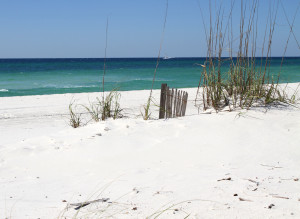A Brief History of Gulf Shores
The completion of the Intracoastal Waterway in 1937, and the opening of the Gulf State Park in 1939, were both crucial factors in attracting people to the Gulf Shores area. The first post office opened in 1947. Previous to that time, the area was sparsely populated with the exception of a small fishing community which dates back to the early 1800s. Incorporation activities began in 1956 with the Town of Gulf Shores finally receiving validation for the incorporation by the judicial system in 1958.
The Intracoastal Canal
Originally the town encompassed some 206 acres geographically located along the banks of the Intracoastal Canal. The 700 feet on the north side of the canal was joined to the larger section on the south side by a cantilever bridge. Development began shortly thereafter, and by the 1960s the town was thriving with family owned grocery stores, restaurants, cottages, and motels for the summer tourists. During the fall and winter months, the town was virtually deserted. In an effort to generate business for these seasons the community arranged fishing rodeos and a National Shrimp Festival began in 1971. Held in October, it has now become a national tourist attraction with upwards of 200,000 people in attendance over a four-day extended weekend.
In 1979, Gulf Shores took a direct hit from Hurricane Fredric. In the aftermath, development surged with increased construction of condominiums, restaurants, and retail outlets. It was during this time the town became the City of Gulf Shores.
Population & Tourism
Gulf Shores is a coastal city, located in Baldwin County, Alabama on the Gulf of Mexico. The population of Gulf Shores in 2000 was 5,044, with 2,344 permanent households. It is home to a constantly changing population. Summer months generate a surge of tourists estimated in the hundreds of thousands. In addition, we are visited in the winter months by a large population known as “snowbirds.” Snowbirds visit Gulf Shores for as many as three to five months during the winter and spring, and then return to their primary residences in northern states for the remainder of the year.
Shrimping, oystering, and fishing employed almost everyone in the area throughout the early settlement years until the 1970s. Fishing laws and regulations have since diminished this way of life. As tourism and real estate replaced the fishing industries, Gulf Shores’ families began to enjoy a more diversified lifestyle than early settlers.